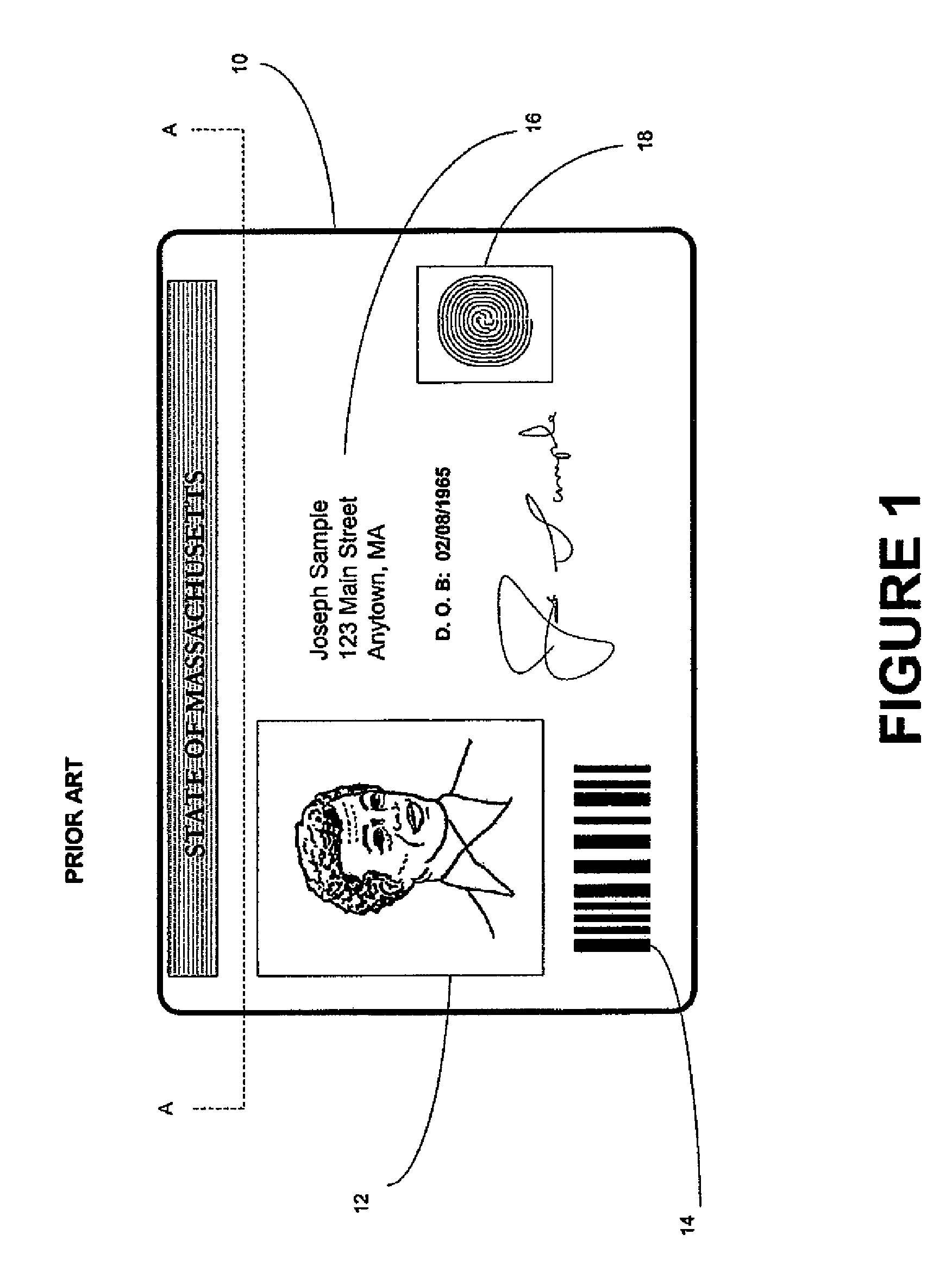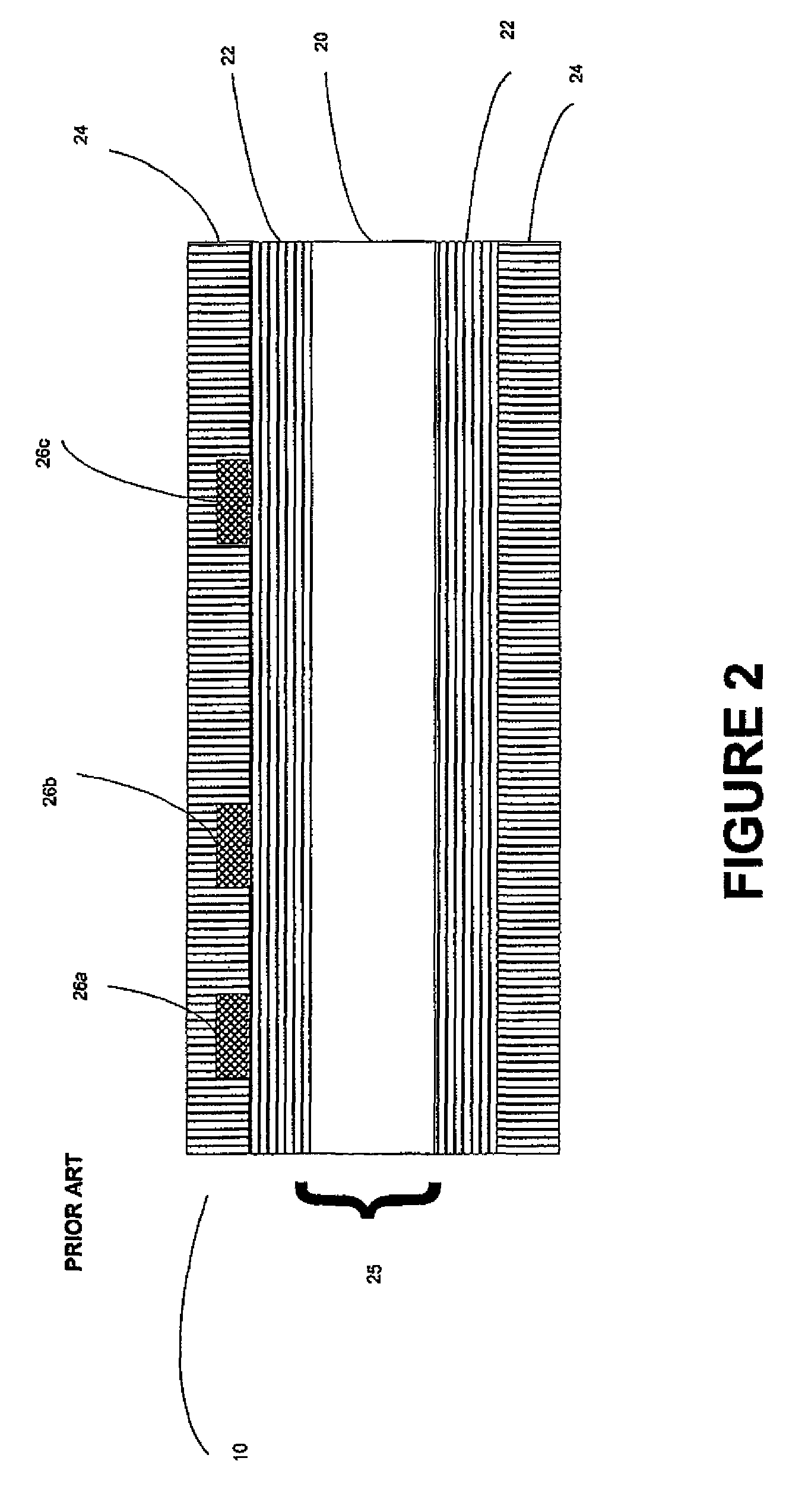Increasing thermal conductivity of host polymer used with laser engraving methods and compositions
a technology of host polymer and thermal conductivity, which is applied in the direction of microwave heating, paper/cardboard containers, and confirming the correctness of markings, etc., can solve the problems of visible discoloration in thermoplastics, insufficient contrast of laser markings of some types of materials, and limitations still exist, so as to improve grayscale engraving and increase thermal conductivity of host materials , the effect of improving the thermal conductivity
- Summary
- Abstract
- Description
- Claims
- Application Information
AI Technical Summary
Benefits of technology
Problems solved by technology
Method used
Image
Examples
second embodiment
[0159]For example, FIG. 4 is an illustrative cross sectional view of an identification document in accordance with the first aspect of the invention. In the embodiment of FIG. 4, the ID document 10 preferably includes a multi-layered structure. For purposes of illustration, however, the ID document 10 may have a front outward appearance generally similar to the identification document 10 of FIG. 1, although the construction and components of the cross-section shown in FIG. 4 differs from the prior art. In the embodiment of FIG. 4, the portion of first laminate 52 containing the inventive laser enhancing additive is disposed at least partially within a layer of another material, such as so-called “plain” laminate 56 (i.e., laminate that does not contain the inventive laser enhancing additive). When a laser beam is applied to the first laminate 52, a third indicium 54G is formed. The plain laminate 56 may comprise a material that is inherently sensitive to laser radiation or can be a ...
third embodiment
[0160]FIG. 5 is an illustrative cross sectional view of an identification document 10 in accordance with the first aspect invention. In the embodiment of FIG. 5, the ID document 10 preferably includes a multi-layered structure. For purposes of illustration, however, the ID document 10 may have a front outward appearance generally similar to the identification document 10 of FIG. 1, although the construction and components of the cross-section shown in FIG. 5 differs from the prior art. In the embodiment of FIG. 5, a first portion of the inventive laser enhancing additive is disposed in a first laminate layer 52 and a second portion of the inventive laser enhancing additive is disposed in a second laminate layer 55. Specifically, in this embodiment, the first laminate layer 52 contains an effective amount of at least one of copper potassium iodide (CuKI3), copper iodide (CuI), Potassium Iodide (KI), Sodium Iodide (NaI), and Aluminum Iodide (AlI) and the second laminate layer 55 conta...
fourth embodiment
[0167]The inventive laser enhancing additive also can be used in a laminate that has one or more additional laminate layers bonded over it. For example, FIG. 6 is an illustrative cross sectional view of an identification document in accordance with the invention. In the embodiment of FIG. 6, the ID document 10 preferably includes a multi-layered structure. For purposes of illustration, however, the ID document 10 may have a front outward appearance generally similar to the identification document 10 of FIG. 1, although the construction and components of the cross-section shown in FIG. 6 differs from the prior art. In FIG. 6, the ID card 10 includes a core material 50 (shown for illustrative purposes only to be about 10 mils thick) to which is laminated a layer (shown for illustrative purposes only to be about 5 mils thick) of first laminate 52 to which the inventive laser enhancing additive is added. Over the first laminate 52 is a layer of second laminate 58 (shown for illustrative...
PUM
| Property | Measurement | Unit |
|---|---|---|
| grayscale | aaaaa | aaaaa |
| concentration | aaaaa | aaaaa |
| concentration | aaaaa | aaaaa |
Abstract
Description
Claims
Application Information
 Login to View More
Login to View More - R&D
- Intellectual Property
- Life Sciences
- Materials
- Tech Scout
- Unparalleled Data Quality
- Higher Quality Content
- 60% Fewer Hallucinations
Browse by: Latest US Patents, China's latest patents, Technical Efficacy Thesaurus, Application Domain, Technology Topic, Popular Technical Reports.
© 2025 PatSnap. All rights reserved.Legal|Privacy policy|Modern Slavery Act Transparency Statement|Sitemap|About US| Contact US: help@patsnap.com



